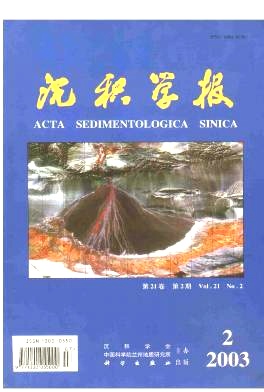|
[1]
|
李勇,王成善,伊海生等.青藏高原中侏罗世-早白垩世羌塘复合型前陆盆地充填模式[J].沉积学报,2001,19(1):20~27[LiYong, Wang Chengshan, Yi Haisheng, et al. Fill models of the Qiangtang composite foreland basin in Qinghai-Xizang plateau, China[J]. Acta Sedimentologica Sinica, 2001, 19(1) :20~27] |
|
[2]
|
黄汲清,陈炳蔚.中国及邻区特提斯海的演化[M].北京:地质出版社,1987.1~105[Huang Jiqing andChenBinwei.The evolution of the Tethys in China and adjacent regions[M]. Beijing:Geological Publishing House, 1987. 1~1sss报告[R](1:100万,改则幅,I~45).1986.1~50[Geological surveyteam of Tibet.China Ge-ological Survey Report(1:1000000,I-45,Gaize Sheet)[R].1986.1~50] |
|
[3]
|
周祥.西藏板块构造-建造图及说明书[M].北京,地质出版社,1984.1~20[Zhou Xiang.Platetectonics of Tibet[M].Beijing:Geo-logical Publishing House,1984,1~20] |
|
[4]
|
刘增乾,徐宪,潘桂唐.青藏高原大地构造与形成演化[M].北京:地质出版社, 1990.1~174[Liu Zengqian, Xu Xian and Pan Guitang, et al. Tectonics and Evolution of the Tibetan Plaeau[M]. Beijing: Geolo-gocal Publishing House, 1990.1~174] |
|
[5]
|
刘训.青藏高原不同地体的地层生物区系及沉积构造演化史[M].北京:地质出版社,1992.2~50[Liu Xun.The stratigraphy,paleobiogeography and sedimentary-tectonic development of Tibet plateau in light of terrane analne analysis [M]. Beijing: Geological Publishing House, 1992. 2~50] |
|
[6]
|
张之孟,金蒙.川西南乡城-得荣地区的两种混杂岩及其构造意义[J].地质科学,1979,3:205~210[Zhang Zhimeng,Jin Meng.The two kinds of melange and tectonic significance in Chengxiang-Derong region, southwester-n Sichuan[J]. Scientia Geologica Sinica, 1979, 205~210] |
|
[7]
|
西藏地质矿产局.西藏区域地质志[M].北京:地质出版社,1993.100~ 188[ Geology and Mineral Bureau of Tibet. Regional geology of Tibet[M]. Beijing: Geological Publishing House, 1993. 100~188] |
|
[8]
|
王鸿祯,杨森楠,刘本培等.中国及邻区构造古地理和生物古地理[M].武汉:中国地质大学出版社,1990.3~50[Wang Hongzhen,Yang Shenman, Liu Benpei, et al. Tectonic paleogeography and biologic paleography of China and adjacent regions[M]. Wuhan: China University of Geoscience Publishing House,1990.3~50] |
|
[9]
|
李勇,吴瑞忠,石和等.青藏高原北部地层研究新进展[A].第三届全国地层会议论文集[C].北京:地质出版社,2000.397~400[LiYong, Wu Ruizhong, Shi He, et al. New progress on stratigaphy innorthern Tibetan Plateau[A]. Proceedings of the third national strati-graphical conference of China [C]. Beijing: Geological PublishingHouse, 2000. 397~400] |
|
[10]
|
李勇,吴瑞忠,朱利东等.西藏金沙江断裂带西段晚古生代牙形石的发现及其地质意义[J].地球科学,2000,25(6):586~616[LiYong, Wu Ruizhong, Zhu Lidong, et al. The discovery and geologi-cal significance of Late Paleozoic Conodonts in Jinshajiang suture, Ti-bet[J]. Earth Science, 2000,25(6):586~616 ] |
|
[11]
|
余光明,王成善.西藏特提斯沉积地质[R].地质专报,第11号.北京:地质出版社,1990.50~100[Yu Guamgming and Wang Chengsham. Sedimentary geology of Tethys in Tibet[R]. Beijing: Geological Publishing House, 1990. 50~100] |
|
[12]
|
Dickinson W R. Plate tectonic evolution of sedimentary basins[A].In: Plate tectonics and hydrocarbon accumulation, AAPG Short Course, 1976:1~56 |
|
[13]
|
Ingersoll R V. Tectonics of sedimentary basin[J] . Geological Sociecty of America Bulletin, 1988,100:1 704~ 1 719 |
|
[14]
|
李勇,伊海生,王成善.青藏高原北部晚三叠世Epigondollella动物群的发现及其地质意义[J].地质论评,1999,45(6):628[Li Yong,Yi Haisheng and Wang Chengshan. The discovery and geological significance of Late Triassic Epigondollella fauna in northern Tibet Plaeau[J]. Geology Review, 1999, 45(6):628] |






 DownLoad:
DownLoad: